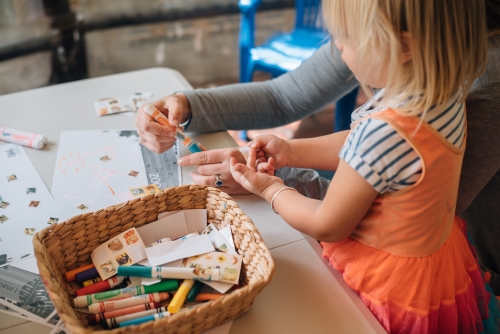Structured vs Unstructured Play
Wednesday, November 29, 2017
Play is more than just fun, it's the key to your child's healthy development.
One of the greatest joys of being a parent is seeing your child grow and develop while watching them play, observing them take delight in mastering new skills and making new friends as they play.
Play is more than just fun however; it’s the key to healthy development. From birth, it’s how babies and children learn. It’s how they work out who they are, test their strengths and boundaries, and discover how the world works and where they fit in.
In fact, according to research on brain development, play actually shapes the structural design of the brain. Play creates a brain that has increased ‘flexibility and improved potential for learning later in life’.1
Learning through play is at the heart of Playgroup SA, where passionate Coordinators encourage “Learning to Play, Playing to Learn”. Most Playgroup sessions will ultimately contain a balance of structured and unstructured play, where children have an opportunity to experience the benefits of a structured, directed activity as well as play their way.
So, what is the difference between structured and unstructured play?
 Structured play is generally adult led providing direction, and a specific task in order for a child/ren to learn a new skill. Structured play is typically a physical or cognitive (brain skill) activity. It doesn’t need to be formal or highly organized, it’s usually an activity on offer at Playgroup with a specific purpose and adult input, for example a game shared between preschoolers, a challenging puzzle, or building a Playgroup garden.
Structured play is generally adult led providing direction, and a specific task in order for a child/ren to learn a new skill. Structured play is typically a physical or cognitive (brain skill) activity. It doesn’t need to be formal or highly organized, it’s usually an activity on offer at Playgroup with a specific purpose and adult input, for example a game shared between preschoolers, a challenging puzzle, or building a Playgroup garden.
During structured play, children are introduced to new ideas and opportunities, enhancing their development and learning abilities, such as setting the foundations for learning to focus, pay attention, take turns and follow instructions.
Unstructured play means openended, or creative free play with endless possibilities. It is child led and directed, and doesn’t require an outcome or product - playing in the home corner; free construction with blocks, painting on blank paper; or getting creative with various recycled materials.
Unstructured play provides children with experiences in creativity, imagination, decision-making and the development of overall emotional and social skills. Researcher Tassoni states that, "children tend to concentrate and persevere for long periods when they are ‘in control’ of their learning. Their levels of motivation are higher because they have chosen something that appeals to them".2
Combining structured and unstructured play
Playgroup is a great space for children to experience both structured and unstructured play. Group times for music, specific craft activities or outdoor games are all examples of structured play in action at Playgroup. Children are given ideas and/or resources such as dress ups, interesting loose parts play, water play and messy play - but then encouraged to explore these activities in their own way. Child led requests for equipment are also catered for at Playgroup in order for children to develop their own curiosity through unstructured play.
Whether at Playgroup or at home, it’s important to find a balance between structured and unstructured play. Try to find some time to play and engage with your child, but also encourage them to play independently. Most importantly though, have fun. Play is a great way to connect with your child and watch them learn and grow.
1 (Lester & Russell, 2008, p. 9), Why play-based learning? http://www.earlychildhoodaustralia.org.au/our-publications/every-child-magazine/every-child-index/every-child-vol-16-3-2010/play-based-learning-free-article/
2 Titus (n.d., p.2), Tassoni (2007, p.390), http://playstructuredunstructured.blogspot.com.au, by Shaani Nelson.
This article was originally published in State of Play, Issue 3, March 2017
